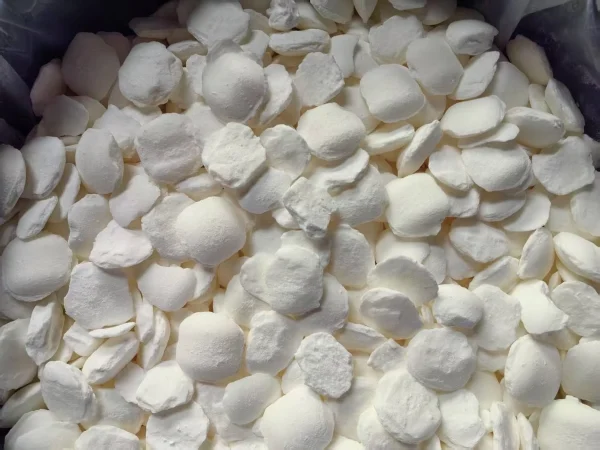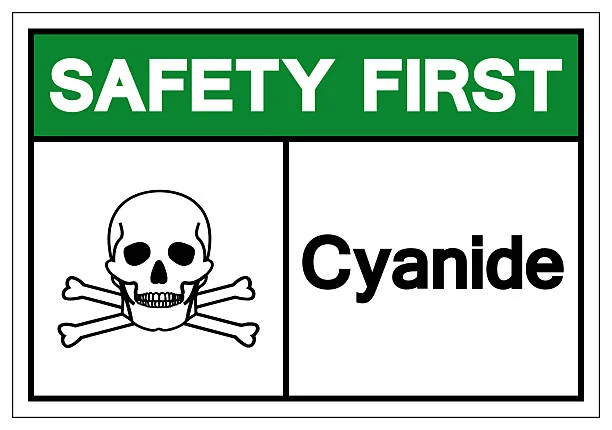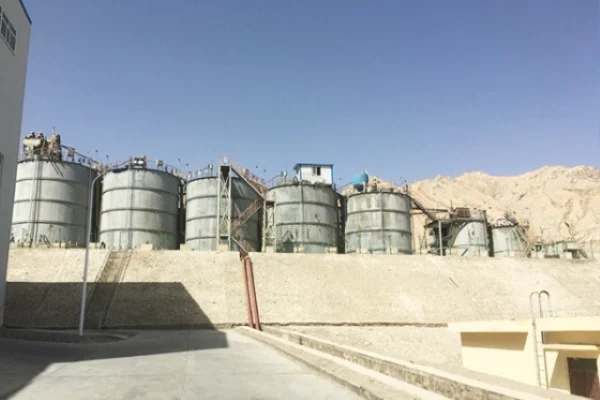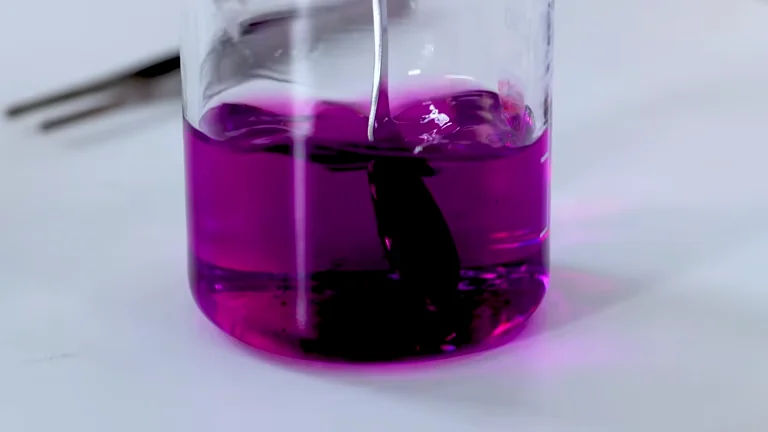
Introduction
In the Gold production industry, the Cyanidation process is widely used for extracting gold from ores. Sodium cyanide plays a crucial role in this process as it forms a soluble complex with gold, allowing for its separation from the ore matrix. However, the concentration of Sodium cyanide in the leaching solution significantly impacts the efficiency of gold extraction, as well as environmental and safety aspects. Precise monitoring and control of Sodium Cyanide concentration are essential for optimizing the gold production process.
The Significance of Sodium Cyanide Concentration in Gold Production
Impact on Gold Extraction Efficiency
A proper concentration of sodium cyanide ensures that the reaction between gold and sodium cyanide in the presence of oxygen proceeds efficiently. If the concentration is too low, the rate of gold dissolution will be slow, resulting in incomplete extraction and lower gold recovery rates. Conversely, an overly high concentration of sodium cyanide may lead to unnecessary consumption of reagents, increased costs, and potential environmental hazards. Generally, the optimal concentration of sodium cyanide in the leaching solution is determined through experimental research and production practice, usually within the range of 0.03% - 0.15% in most cases.
Environmental and Safety Considerations
Sodium cyanide is a highly toxic substance. In the gold production process, any leakage or improper disposal of solutions containing sodium cyanide can cause severe environmental pollution and endanger the health and safety of workers and the public. Precise control of its concentration helps minimize the amount of cyanide used, reducing the risk of leakage and the burden on subsequent wastewater treatment. For example, in the tailings management of gold mines, it is necessary to ensure that the cyanide concentration in the tailings is reduced to a safe level through appropriate treatment methods. In China, the standard requires that the cyanide concentration in tailings should be less than 0.2 mg/L.
Monitoring Methods for Sodium Cyanide Concentration
Traditional Chemical Analysis Methods
Silver Nitrate Titration Method
This is a commonly used method in gold mines. The principle is that silver ions react with cyanide ions to form a silver cyanide complex. By titrating the sample solution with a standard silver nitrate solution and using an indicator, the end - point of the reaction can be determined, and then the concentration of cyanide ions in the solution can be calculated. However, this method requires sampling on - site, followed by laboratory - based sample treatment and titration. The process is time - consuming, and there is a time lag between sampling and obtaining results, which may not be able to provide real - time guidance for the production process.
Colorimetric Method
The colorimetric method utilizes the reaction of cyanide ions with certain reagents to produce a colored product. The intensity of the color is proportional to the concentration of cyanide ions. For example, the cyanide concentration test paper developed by Beijing Jinsuokun is based on this principle. The test paper contains a characteristic indicator that reacts with cyanide ions at room temperature to change color. By comparing the color of the test paper after immersion in the sample solution with a standard color - comparison card, the concentration of cyanide ions in the solution can be quickly determined. This method has the advantages of small volume, portability, convenience, low cost, and rapid testing. It is suitable for monitoring the concentration of cyanide in leaching solutions, tailings solutions, and other solutions in gold mine production processes such as heap leaching, tank leaching, and whole - ore cyanidation. The applicable concentration range of the test paper is generally 0.01% - 1.0%, which can meet the needs of most gold production scenarios.
Modern Instrument - based Monitoring Technologies
Automated Analyzers
With the development of technology, automated analyzers for detecting sodium cyanide concentration have emerged. These analyzers can achieve automated sampling, analysis, and result output. For example, some analyzers use flow injection analysis technology, which can continuously inject samples and reagents into the flow system, perform reactions and detections in the pipeline, and quickly obtain accurate concentration values. Automated analyzers are highly automated and accurate, reducing the labor intensity of workers and providing real - time data for the production process, which is conducive to timely adjustment of production parameters.
Spectroscopic Methods
Spectroscopic methods such as ultraviolet - visible spectroscopy and ion - selective electrode spectroscopy can also be used to monitor the concentration of sodium cyanide. Ultraviolet - visible spectroscopy measures the absorbance of the sample solution at a specific wavelength. Since cyanide - containing complexes have characteristic absorption peaks in the ultraviolet - visible region, the concentration of cyanide can be determined by establishing a calibration curve. Ion - selective electrode spectroscopy uses an ion - selective electrode specific to cyanide ions. When the electrode is immersed in the sample solution, a potential difference is generated due to the selective response of the electrode to cyanide ions, and the concentration of cyanide ions can be calculated accordingly. These spectroscopic methods are fast, accurate, and can be used for on - line monitoring in the production process.
Control Strategies for Sodium Cyanide Concentration
Optimization of the Leaching Process
Adjustment of the Leaching System
In the leaching process, factors such as the pH value of the solution, temperature, and aeration rate also affect the reaction between sodium cyanide and gold. For example, maintaining the pH value of the leaching solution in the range of 10 - 11 can ensure the stability of cyanide ions, prevent the decomposition of cyanide into toxic hydrogen cyanide gas, and also promote the dissolution of gold. The temperature of the leaching solution generally has an impact on the reaction rate. Although increasing the temperature can accelerate the reaction, it also increases the consumption of sodium cyanide and may cause other side reactions. Therefore, it is necessary to determine the appropriate temperature through experiments. In addition, sufficient aeration can provide the oxygen required for the reaction, but excessive aeration may lead to the oxidation of other substances in the solution and affect the leaching effect. By comprehensively optimizing these factors in the leaching system, the concentration of sodium cyanide can be effectively controlled within an appropriate range.
Control of the Leaching Time
The leaching time is closely related to the concentration of sodium cyanide. In the initial stage of leaching, the concentration of sodium cyanide is relatively high to ensure a fast reaction rate. As the leaching process progresses, the concentration of sodium cyanide gradually decreases. By accurately controlling the leaching time, it is possible to ensure that the gold is fully dissolved while minimizing the unnecessary consumption of sodium cyanide. The determination of the leaching time needs to consider factors such as the nature of the ore, the particle size of the ore, and the initial concentration of sodium cyanide. For example, for ores with a high gold content and good cyanide - leaching properties, a shorter leaching time may be sufficient; while for complex ores, a longer leaching time may be required.
Real - time Monitoring and Feedback Control
Establishment of a Monitoring System
To achieve precise control of sodium cyanide concentration, it is necessary to establish a comprehensive monitoring system. This system should include on - line monitoring instruments for sodium cyanide concentration, as well as sensors for other relevant parameters such as pH value, temperature, and solution flow rate. The data collected by these monitoring devices is transmitted in real - time to a central control system. The central control system can analyze and process these data, and according to the preset control model, generate control instructions to adjust the addition amount of sodium cyanide and other operation parameters.
Feedback Control Mechanism
Based on the data from the monitoring system, a feedback control mechanism is established. If the monitored concentration of sodium cyanide deviates from the set value, the control system will automatically adjust the addition amount of sodium cyanide. For example, if the concentration is lower than the set value, the control system will increase the amount of sodium cyanide added; if the concentration is too high, the addition amount will be reduced. This feedback control mechanism can ensure that the concentration of sodium cyanide in the leaching solution is always maintained within the optimal range, thereby improving the stability and efficiency of the gold production process.
Conclusion
In gold production, the monitoring and control of sodium cyanide concentration are of great significance for improving gold extraction efficiency, ensuring environmental safety, and reducing production costs. Through the use of a variety of monitoring methods, including traditional chemical analysis methods and modern instrument - based monitoring technologies, and the implementation of effective control strategies such as optimizing the leaching process and establishing a real - time monitoring and feedback control system, it is possible to achieve precise control of sodium cyanide concentration. With the continuous development of technology, more advanced monitoring and control methods will emerge, further promoting the sustainable development of the gold production industry.
- Random Content
- Hot content
- Hot review content
- Salicylhydroxamic acid / Salicyl Hydroximic Acid 60%Min
- Industrial Grade Sodium Metabisulfite 96.5%
- High-strength, High-precision Shock Tube Detonator
- Ammonium Nitrate Porous Prills
- Calcium Peroxide 60% Assay Yellowish Tablet
- Potassium borohydride
- Ammonium Persulfate Industrial Grade 98.5%
- 1Discounted Sodium Cyanide (CAS: 143-33-9) for Mining - High Quality & Competitive Pricing
- 2China's New Regulations on Sodium Cyanide Exports and Guidance for International Buyers
- 3Sodium Cyanide 98% CAS 143-33-9 gold dressing agent Essential for Mining and Chemical Industries
- 4International Cyanide(Sodium cyanide) Management Code - Gold Mine Acceptance Standards
- 5China factory Sulfuric Acid 98%
- 6Anhydrous Oxalic acid 99.6% Industrial Grade
- 7Oxalic acid for mining 99.6%
- 1Sodium Cyanide 98% CAS 143-33-9 gold dressing agent Essential for Mining and Chemical Industries
- 2High Quality 99% Purity of Cyanuric chloride ISO 9001:2005 REACH Verified Producer
- 3Zinc chloride ZnCl2 for High Molecular Weight Polymers Initiator
- 4High Purity · Stable Performance · Higher Recovery — sodium cyanide for modern gold leaching
- 5High Quality Sodium Ferrocyanide / Sodium Hexacyanoferr
- 6Gold Ore Dressing Agent Safe Gold Extracting Agent Replace Sodium Cyanide
- 7Sodium Cyanide 98%+ CAS 143-33-9











Online message consultation
Add comment: